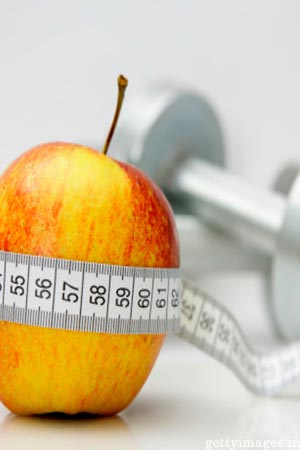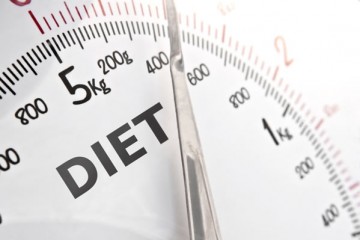Read This Now To Lose Weight Now Energy Intake Vs Energy Expenditure
A staggering number of adults and children are either overweight or obese in the United States today. Obesity is one of the main contributing factors associated with heart disease, type 2 diabetes, arthritis, high blood pressure, psychological disorders like depression, and some forms of cancer. Obesity is no longer an adult disease; its prevalence has nearly tripled among adolescents within the past two decades. There are a number of factors associated with maintaining a healthy body weight. These include genetics, body composition, environment, and physical activity and its relationship to metabolism, as well as excessive calorie intake.
GENETICS AND METABOLISM
Calorie expenditure is not completely dependent on exercise. Metabolism is an involuntary activity that affects an individual's ability to burn calories. When you are awake and resting, calories are burned just to keep you alive; this is considered your resting energy expenditure (REE).
The REE between men and women is significantly different. A woman's metabolism is 10-15 percent slower than a man's because males naturally have more muscle mass, while females have a greater proportion of body fat.
In addition, hormone activity, like the hormones produced by the thyroid gland, establish overall metabolic rate. Body composition, unlike genetics, can be altered to some extent.
BODY COMPOSITION AND METABOLISM
REE naturally decreases with age because of muscle mass loss. As a result, weight loss at a younger age is easier to accomplish. In general, losing body weight from fat or muscle lowers daily REE. It should be noted that at rest fat burns approximately 1-2 calories per hour versus muscle, which burns about 30-35 calories per hour. Therefore, maintaining body weight while decreasing fat and increasing muscle will raise REE greatly.
ENVIRONMENT AND METABOLISM
The last and most modifiable factor for REE is environment. Certain stimulants can elicit a response in metabolism. Two of these that are used on a day-to-day basis are caffeine and nicotine. It has been reported in studies that two to three cups of coffee can raise REE as much as 12 percent. Cigarettes, which contain nicotine, also stimulate metabolism. People who smoke cigarettes often experience a weight gain after quitting. This may be due to a decrease in REE, as well as increased caloric consumption.
Temperature is another major environmental factor affecting metabolism. In cold environments, the combination of releasing certain hormones (i.e. adrenaline) and shivering can increase REE up to 400 percent. REE is raised in warmer environments due to increased cardiovascular activity and sweating.
PHYSICAL ACTIVITY AND METABOLISM
As you can see from the examples above, your metabolic rate is regulated by a number of factors. Exercise, in general, will increase your metabolic rate. When you exercise your body releases stored fuels to aid in energy production. Remember, your body composition greatly affects how many calories you burn in a typical day. Therefore, the more muscle mass you have, the more calories you will burn because muscle is metabolically active. Resistance exercise is the best way to increase muscle mass, while aerobic activity is better to increase your circulatory system and strengthen your heart.
However, exercising is just one part of the picture. In order to maintain a healthy body weight, you must match your energy intake with your energy output.
EXCESSIVE CALORIE INTAKE = SUPERSIZED WAISTLINES
The average adult consumes about one million calories per year. The human body has evolved to be a highly efficient system, which is the reason why excessive caloric intake leads to weight gain. For example, if you were to eat just over 50 calories every day of your energy expenditure, you could expect to gain about five pounds of additional fat per year. This is equal to just five potato chips.
Everyone knows that fast food is not the healthiest option, yet millions of people visit fast food restaurants everyday. Although fast food is not the only way people get too many calories, it is a major contributor.
If you were to go to Wendy's and order a Classic Single Burger Value Meal, you will probably meet half of your allotted calories for a single day, given you were an average adult on a 2000-calorie diet. One Classic Single, with all the fixings, has about 410 calories, a Biggie fry has about 470 calories, and a 22-fl. oz regular soda has about 277 calories, for a whopping total of 1157 calories. Now if you were to Biggie Size that order, the total calories would increase to about 1383 calories.
Burger King burger's are flame broiled so does that make them healthier? Not exactly. A BK Whopper with cheese contains about 850 calories. If you ordered the Value Meal, which includes a large fry and 22 fl. oz soda, your meal total has been raised to 1630 calories. Going for chicken instead of beef is a healthy alternative, as long as it is grilled breast meat without the breading.
Subway has been marketing itself as a healthy alternative to other fast food chains. What they fail to tell you in the commercials, or mention in small print, is that you cannot have a regular soda, extra condiments (i.e. cheese or mayo), or a 12" sub to consider it a low-fat or low-calorie meal. One 12" roasted chicken breast sub has about 622 calories, without cheese or mayo. Without chips, if you added a medium 22 fl. oz regular soda to that meal, it has just been increased to 900 calories. Even worse is the signature Subway 12" meatball sub, which has about 1000 calories.
As you can see from the examples above, fast food can really pack a calorie-punch. Value Meals seem like a great value when you consider the cost of creating your own meal versus one suggested to you. There is nothing wrong with going to fast-food joints once in awhile. The problem lies when you frequent these places too often. I only mentioned total calories here, but I should remind you that these places not only offer a lot of calories but high amounts of total fat, particularly saturated and trans, and cholesterol.
So what does it take to burn off a Whopper, French fries, or a sub everyday? Let me ask you this. "While you supersize those meals, are you also supersizing your exercise routine?" To burn off an average value meal (approximately 1500 calories) you could choose from any of the following activity options:
* Run 15 miles in 2 1/2 hours (10 minute/mile pace).
* Climb flights of stairs for 7 1/2 hours.
* Walking at a light to moderate pace for 10 hours.
* Drive your car for 13 1/2 hours.
* Stand up for 15 hours.
As you can see from these examples, it takes an excessive amount of activity to burn off those calories. So does this mean that you should never eat at a fast food place ever again? No.
If you were to go to these places, I would first tell you to look at the calorie content of the foods that you intend to purchase. Fast food restaurants should have their nutrition facts available; although you may have to do some searching. Just a few quick tips to cut calories:
1. Order small sides with your burger
2. Drink diet vs regular soda
3. Load the veggies on your sub and use vinegar instead of mayo
All in all, eating too many calories, while not being physically active, are the two main causes of weight gain. If you eat too many calories, you must also boost your exercise routine to compensate for this. Adjustments in nutrition, exercise, and overall lifestyle are the best solution. Eat moderate amounts and adjust your day-to-day activities to reflect changes in diet.
-
When Others Are Jealous Of Your Weight Loss Success
One of the challenges of success is dealing with how the people in our
-
Treating PCOS with Acupuncture
For many women, losing weight is a never-ending struggle. No matter
-
Abdominal Fat – How To Get Rid of It
Despite the fact that a lot of people say it’s almost impossible
-
Lose Weight With These Easy Tricks And Tips
Do you feel that you’re overweight? How does it impact you
-
13 Genes Cause Weight Gain Around Belly And Thighs
Scientists from the Institute of Metabolic Science in Cambridge,
-
Easy Weight Loss - Best Weight Loss Diets
While there is no such a thing as losing weight overnight, there are d
- DON'T MISS
- Reach Your Weight Loss Peak? Four Ways To Conquer That Plateau
- Weight Loss - Fat Loss - Quick Weight loss - Weight Loss Diet - How to Lose Weight
- Time to fatten up our diets
- I Lost Weight: Matthew Berning Revamped His Eating Habits And Lost Over 70 Pounds
- Lean Physique Exercise – Get Ripped Fast
- Once You Lose The Weight How Do You Keep It Off?
- Read My Own Phenternin Hoodia Diet Success Story
- BodyRock Sweatography: Inspiration from Unexpected Sources
- How To Eliminate Weight Loss Failure By Lifting Weights The Secret Everyone Ignores
- Understanding Weight Loss: How to Lose 20 Pounds by Swimming




